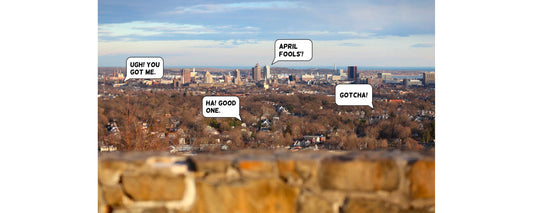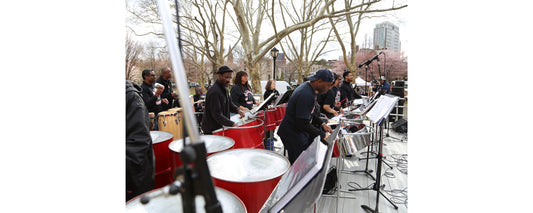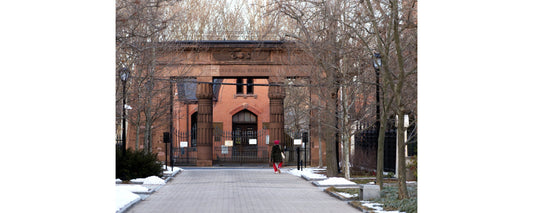The season of crisp air, changing leaves, apple orchards and pumpkin patches is also the season of ghosts and their stories.
Interestingly, New Haven’s most famous ghost story features an apparition that brought closure, not terror.
The early days of the New Haven Colony were difficult, to put it mildly. The Puritan settlers had dreamed of a commercial success, but years of struggle amid inhospitable conditions humbled them. In 1645, after the failure of several ventures, leading men of the colony formed a company of merchants and arranged for the construction of a “great ship” in Rhode Island. The idea was to send as many local goods as could fit in its hull to London, with the goal of establishing direct trade with England. The ship would ultimately hold around 70 people and a cargo of 5,000 pounds that included peas, wheat, pelts, plate and manuscripts by Reverend John Davenport, founder and minister of the New Haven Colony, and Thomas Hooker, the analogous figure of the Connecticut Colony, intended for the printer. By the time the vessel arrived in New Haven for loading, the merchants noticed it had a list to one side, and colonists heard the ship’s master, Captain George Lamberton, suggest that it would prove to be their grave.
sponsored by
The great ship set sail anyway, in January 1646, but the harbor was frozen, and a three-mile passage had to be sawed through the ice. Reverend Davenport, along with tearful friends praying for the ship’s safe passage, attended the crew and passengers as it crept toward open water. Before the ship departed, Davenport offered this benediction: “Lord, if it be thy pleasure to bury these our friends in the bottom of the sea, they are thine; save them!”
Brimming with blood, treasure and hope, the ship and its crew headed for London and, one way or another, salvation. Back in New Haven, spring arrived and with it came ships from England carrying the bad news of no news. In desperation, the colonists prayed fervently for their loved ones, but by the fall of 1646, it seemed clear the ship was lost to the sea. The colonists began to pray that God would somehow reveal the fate of their ship.
One day in June of 1648, almost two and a half years after the great ship departed, those prayers were answered. After a severe thunderstorm, about an hour before sunset, a ship with the same dimensions as the lost vessel was seen floating in the air at the mouth of the New Haven Harbor. Its flag fluttered and sails filled as it moved against the wind. Standing on the deck, a man held a sword stretched out toward the sea.
On land, the colony gathered to behold this awesome sight. For up to half an hour, they watched as the ship approached, coming so close to shore that spectators later estimated they could have hurled a stone aboard it. Then, suddenly, the ship’s masts blew off, its hull careened and the entire vessel overset as a cloud of smoke enveloped it. When the air cleared, the ship was gone. The settlers saw in this apparition their great ship, and so did Davenport, who declared it God’s way of showing them the fate that had befallen it.
The story has been retold endlessly with varying degrees of historical fidelity. Ultimately, all accounts derive from two 17th-century sources: a June 1648 entry in the journal of Massachusetts Bay governor John Winthrop, who heard the story in Boston; and an undated letter from Reverend James Pierpont, minister of the Church of Christ in New Haven (now known as Center Church on the Green), who heard it from his older congregants. Pierpont’s letter, sent to the eminent Puritan clergyman and author Cotton Mather, can be found in Mather’s Magnalia Christi Americana, a religious history of New England published in 1702.
Modern attempts to explain what the colonists may have seen over New Haven Harbor in June 1648 include an optical illusion, a mass delusion and, less plausibly, an extraterrestrial encounter, but what cannot be doubted is that this story has long captured the imagination of writers, artists and New Haven residents. The most famous literary adaptation of the story is surely Henry Wadsworth Longfellow’s 1851 poem “The Phantom Ship,” in which Pierpont’s letter “is set down in rhyme.” Some sources claim that Longfellow coined the phrase “phantom ship” to describe the phenomenon, but it appears in several earlier texts including Reverend Leonard Bacon’s 1839 book Thirteen Historical Discourses on The Completion of Two Hundred Years, From the Beginning of the First Church in New Haven.
Readers underwhelmed by Longfellow’s verse might be more intrigued by visual representations of the phantom ship. One example is Irving E. Hurlburt’s woodcut “Ye Ghost Ship,” which first appeared in the New Haven Almanack, a series of promotional booklets published by the John E. Bassett Company, a New Haven hardware store, between 1906 and 1913. More striking is Jesse Talbot’s 1850 painting Vision of the Phantom Ship, now in the collection of the New Haven Museum, in which Talbot, a Hudson River School artist, vividly depicts the colonists watching the ship’s approach. In terms of medium, a truly unique representation of the phantom ship is a 1930 stained-glass window by G. Owen Bonawit found in the nave of Yale’s Sterling Memorial Library. More recent contributions to this genre include a 1980 steel sculpture by John Landino in Kimberly Square, a 1988 commemorative medal commissioned by Peter Indorf for New Haven’s 350th anniversary (which depicts the phantom ship in front of a modern New Haven skyline) and an October 2013 Light Artist Making Places (LAMP) festival dedicated to the theme of “The Phantom Shippe.”
Yet the most beloved piece of phantom ship artwork might be a 1920s terrazzo medallion by Max Teterman that once greeted customers from the floor of the entryway to Liggett’s drugstore before it was concealed by tile flooring. In a 1990 renovation of the Exchange Building by the Fusco Corporation, a team led by Tom Butler, who remembered walking over the ship as a child, recovered the medallion and mounted it to a wall in the lobby. In 2016, it was removed from the Exchange Building and installed in the floor of the Canal Dock Boathouse, where you can find it today (though I’d recommend calling ahead).
After a visit to the boathouse, you can look out over the harbor and wonder what the colonists encountered there 375 years ago. If you struggle to settle on an explanation, you can at least take comfort in the fact that this mystery has enriched the folklife of New Haven for centuries.
Written and photographed by Nicholas Mignanelli. Image 1 features “Ye Ghost Ship,” a woodcut by Irving E. Hurlburt as published by the New Haven Almanack. Image 2 features the medal commissioned by Peter Indorf to commemorate the city’s 350th anniversary.








